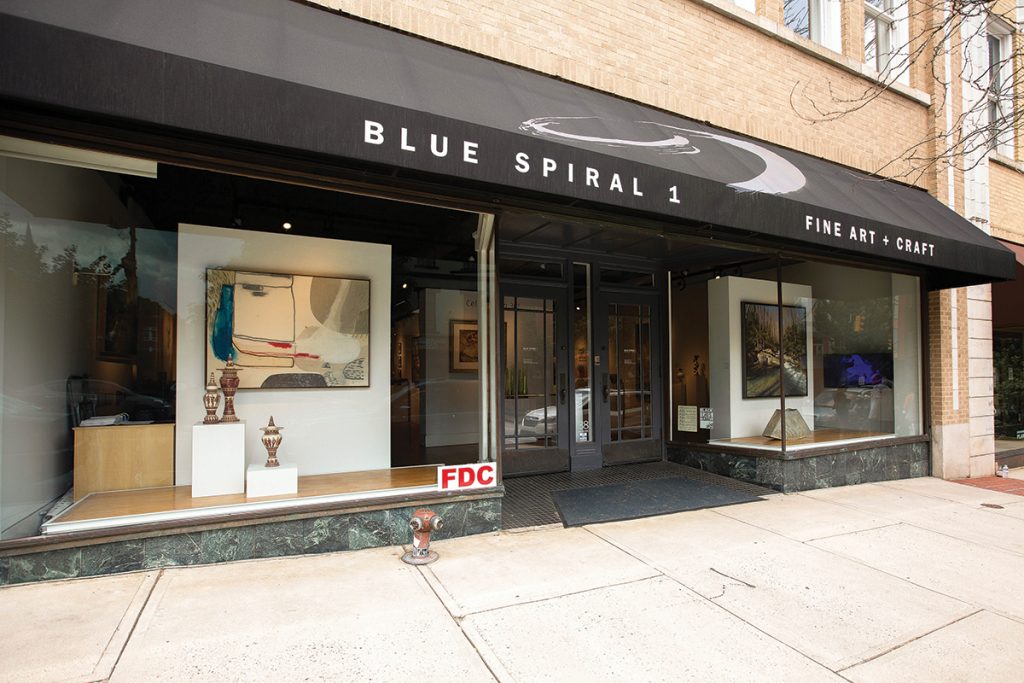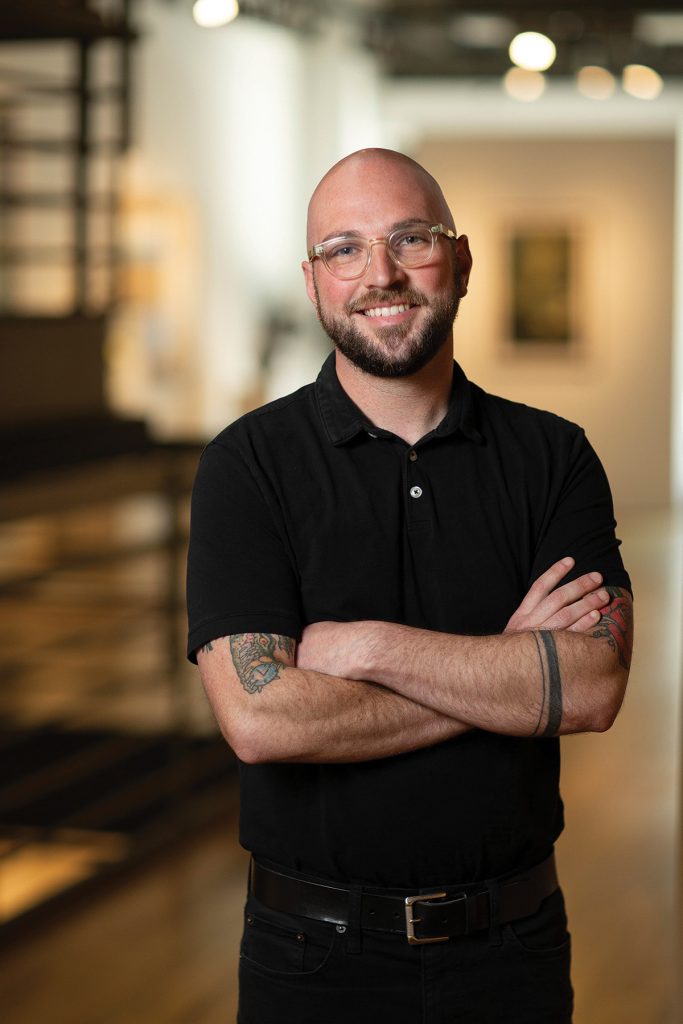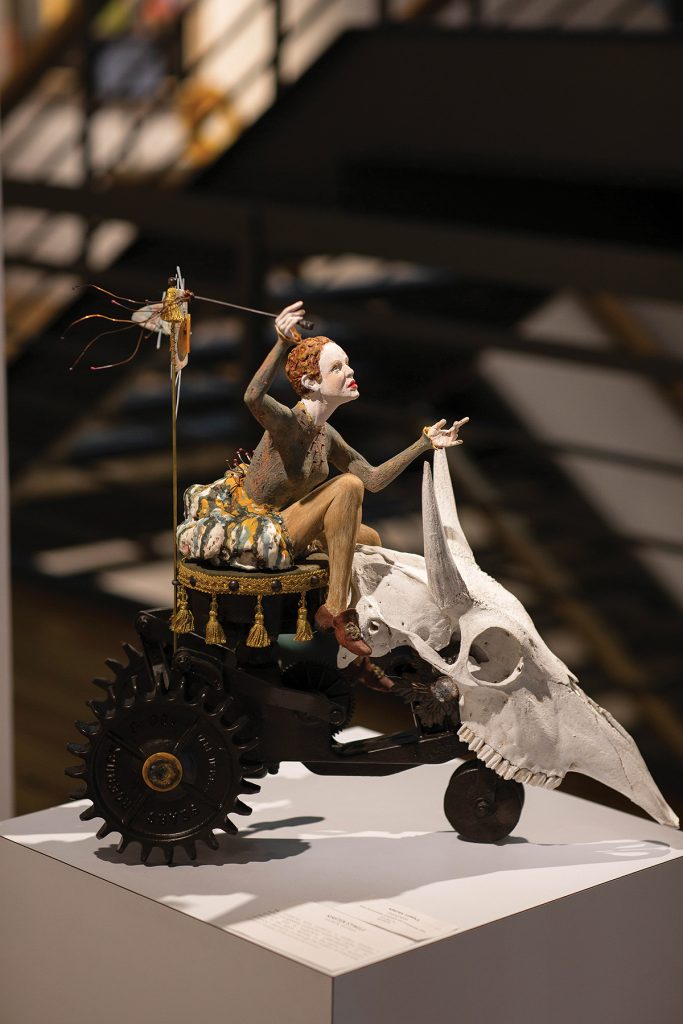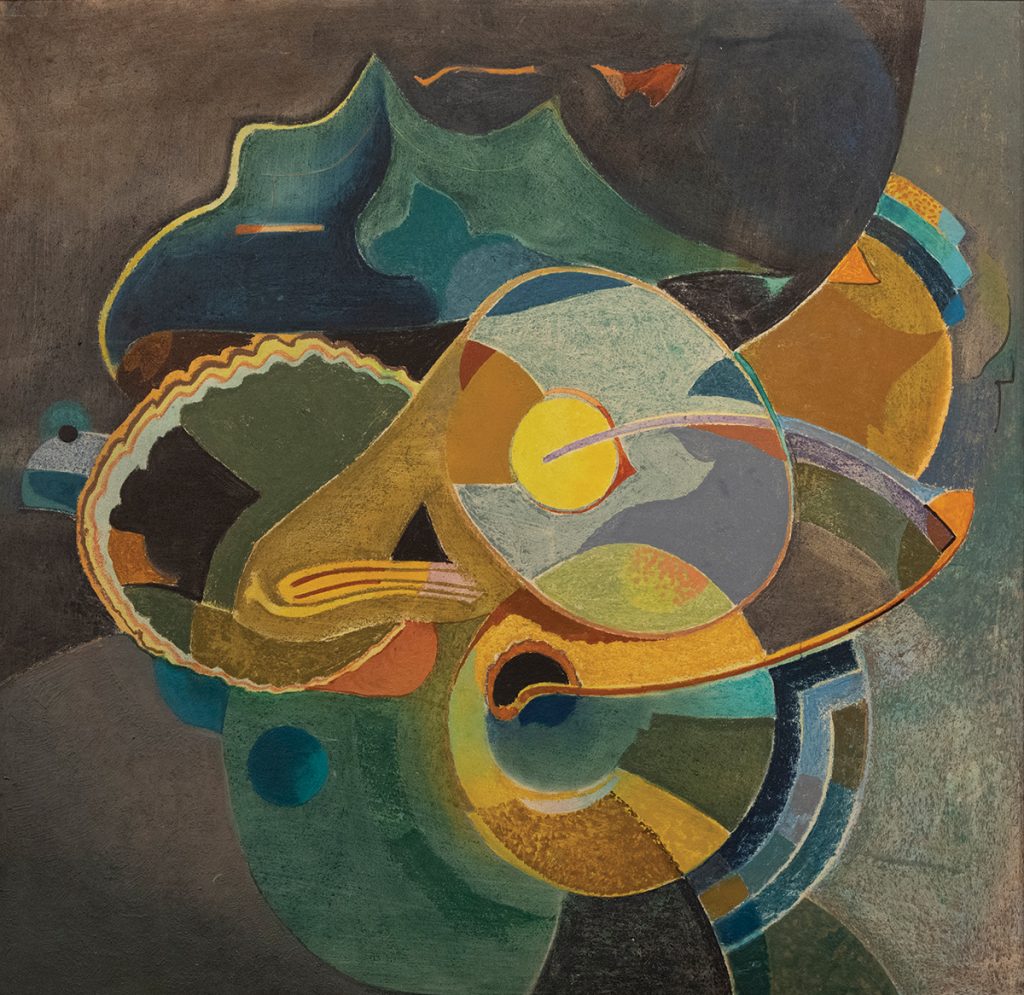
When John Cram opened Blue Spiral 1 Gallery on New Year’s Eve 30 years ago, many questioned the wisdom of such a move. At the time, downtown Asheville was little more than a shell, with many buildings boarded up, and, by sunset, most of the streets were deserted, devoid of the tourists we’re used to seeing today.
However, the economic hardships of the era also created an opportunity: painters, potters, sculptors, and other creatives were drawn to the area because of the then-cheap rents. Despite the bleak economic outlook, Cram saw the beauty around him and the potential for more, and in honor of their founder, who passed away late last year, Blue Spiral 1 is emphasizing the gallery’s past, present, and vision for the future.

“John recognized a need, took a chance, and made an investment that altered the trajectory of visual culture in Asheville,” says Michael Manes, Blue Spiral 1 Gallery’s director and co-owner. Opened in a former radio-supply business located between an adult movie theater and a plumbing store, the venue is, today, among the largest and busiest galleries in the South, “[and] the heart of a booming art scene in downtown Asheville,” says Manes.
In celebration of Blue Spiral 1’s 30-year anniversary, Manes says, “We are tipping our hats to the many artists who have made the gallery one of the nation’s most exciting venues for contemporary fine art and studio craft.”

Photo by Colby Rabon
From the start, Cram showcased his collected works of Will Henry Stevens (1881-1949), a Kandinsky- and Klee-inspired modernist who was also a committed naturalist. Blue Spiral 1 continues to represent the painter’s estate and exhibit his work; in fact, Stevens inspired a theme: Many of the gallery’s long-time artists also have a distinct environmentalist approach.
“I’ve been with Blue Spiral 1 ever since it opened, and had one of their first shows,” says artist Robert Johnson of Celo, who made a name for himself painting botanically rich, folkloric paintings that evoke visions of a time when the natural world was free of human intervention. Johnson has been sponsored by the Nature Conservancy to study wilderness areas, and his canvases depict remote or imperiled habitats from North Carolina to the Central American rainforest. In the beginning, though, “my name was up on the marquee at the old porno theater,” recalls Johnson. (Cram later turned that space into a popular independent-cinema house, the Fine Arts Theatre.)

Photo by Colby Rabon
Also exhibiting at the gallery from its earliest days is Kathy Triplett, a Weaverville ceramic artist known for her fanciful sculptural teapots. “I have appreciated Blue Spiral’s openness to style and content changes as, over the years, my work evolved from functional wheel-thrown work to wall sculptures, public art, and new media,” she states. (Hundreds of Triplett’s hand-built tiles are incorporated in the Bascom Lamar Lunsford Stage in Pack Square Park.)
A bit of folklore surrounds the origin of the gallery’s name. There was a blue moon at the time of the opening, but also, Manes notes that the spiral shape is “a symbol for big concepts like evolution, life, consciousness, creation, and more. And that represented for John all of these factors for his newest adventure in the arts.”

The “1” has a cosmic background, too. It seems Cram had a naming party for the gallery, and one of the invited guests was a numerologist. “It was meant to set the name apart and to add interest,” says Manes. “But more than that, it has created an ongoing dialogue as to whether there would ever be more than one Blue Spiral gallery.”
Another artist with early ties to the venue is basketmaker Patti Quinn Hill, also of Weaverville, a celebrated innovator who combines traditional weaving techniques with nontraditional materials — her medium, instead of fiber, is heavyweight archival paper laced with metallic thread.

After her first show at Blue Spiral 1, in 1997, Hill was thrilled but worried. “I told them that I did not work consistently, and therefore inventory would be low from time to time. John Cram told me it was okay, and to just bring work when I had it.” She adds, “Being a member of the Blue Spiral family has made all of the difference to my career.”
Suzanne Stryk, an artist living in Bristol, Virginia, has exhibited at Blue Spiral 1 since 1999. “It’s not easy to find a gallery that’s as professional and beautiful as Blue Spiral that’s willing to show my paintings of insects, salamanders, turtles, and other creatures,” she remarks. “John Cram was both an art lover and an environmentalist — the right combination for my sensibility.”

Photo by Colby Rabon
“To this day,” says Manes, “the original mission of the gallery remains as we grow and expand our reach with our artists and collectors. We will continue to embrace change and adapt to our times, while still holding onto the roots that John planted.”
Blue Spiral 1 is a three-story gallery located at 38 Biltmore Ave. in downtown Asheville. Exhibits by Robert Johnson and other gallery mainstays will show this summer and throughout the end of 2021, the venue’s 30th year. Hours are 11am-5pm Sunday through Tuesday and 11am-6pm Wednesday through Saturday. 828-251-0202. For a list of current and upcoming exhibits, see bluespiral1.com.